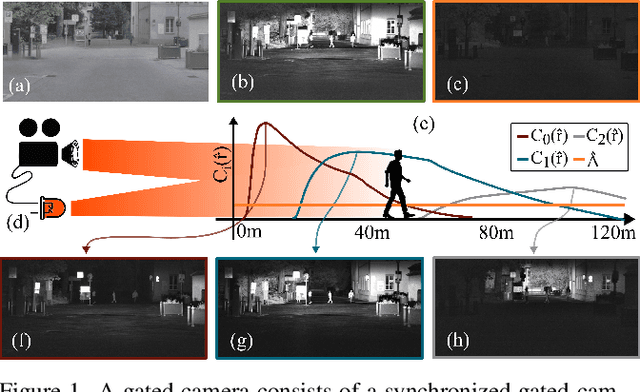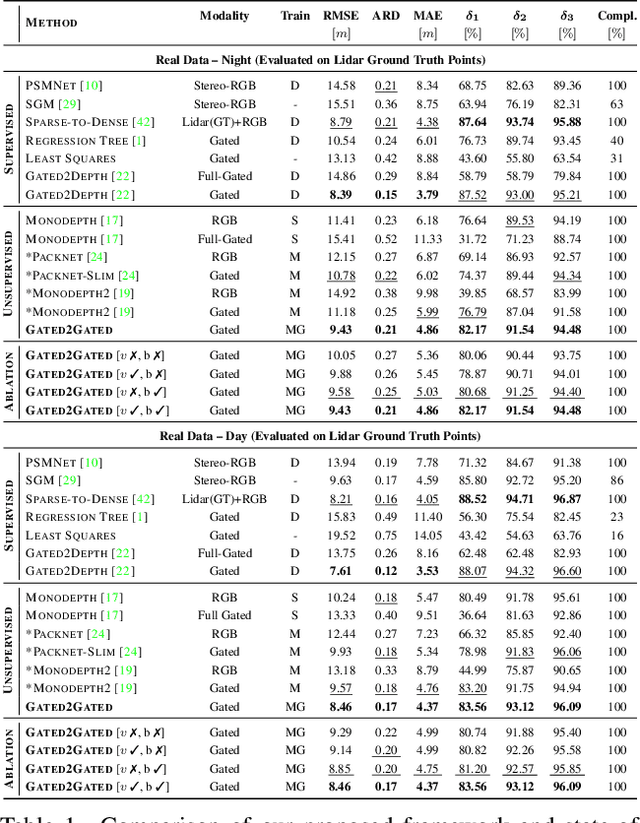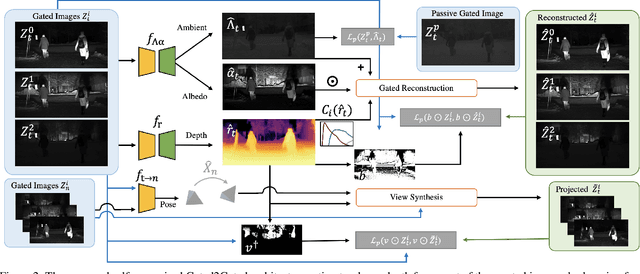Amanpreet Walia
Dual-Camera Joint Deblurring-Denoising
Sep 16, 2023Abstract:Recent image enhancement methods have shown the advantages of using a pair of long and short-exposure images for low-light photography. These image modalities offer complementary strengths and weaknesses. The former yields an image that is clean but blurry due to camera or object motion, whereas the latter is sharp but noisy due to low photon count. Motivated by the fact that modern smartphones come equipped with multiple rear-facing camera sensors, we propose a novel dual-camera method for obtaining a high-quality image. Our method uses a synchronized burst of short exposure images captured by one camera and a long exposure image simultaneously captured by another. Having a synchronized short exposure burst alongside the long exposure image enables us to (i) obtain better denoising by using a burst instead of a single image, (ii) recover motion from the burst and use it for motion-aware deblurring of the long exposure image, and (iii) fuse the two results to further enhance quality. Our method is able to achieve state-of-the-art results on synthetic dual-camera images from the GoPro dataset with five times fewer training parameters compared to the next best method. We also show that our method qualitatively outperforms competing approaches on real synchronized dual-camera captures.
Gated Stereo: Joint Depth Estimation from Gated and Wide-Baseline Active Stereo Cues
May 22, 2023Abstract:We propose Gated Stereo, a high-resolution and long-range depth estimation technique that operates on active gated stereo images. Using active and high dynamic range passive captures, Gated Stereo exploits multi-view cues alongside time-of-flight intensity cues from active gating. To this end, we propose a depth estimation method with a monocular and stereo depth prediction branch which are combined in a final fusion stage. Each block is supervised through a combination of supervised and gated self-supervision losses. To facilitate training and validation, we acquire a long-range synchronized gated stereo dataset for automotive scenarios. We find that the method achieves an improvement of more than 50 % MAE compared to the next best RGB stereo method, and 74 % MAE to existing monocular gated methods for distances up to 160 m. Our code,models and datasets are available here.
Gated2Gated: Self-Supervised Depth Estimation from Gated Images
Dec 04, 2021



Abstract:Gated cameras hold promise as an alternative to scanning LiDAR sensors with high-resolution 3D depth that is robust to back-scatter in fog, snow, and rain. Instead of sequentially scanning a scene and directly recording depth via the photon time-of-flight, as in pulsed LiDAR sensors, gated imagers encode depth in the relative intensity of a handful of gated slices, captured at megapixel resolution. Although existing methods have shown that it is possible to decode high-resolution depth from such measurements, these methods require synchronized and calibrated LiDAR to supervise the gated depth decoder -- prohibiting fast adoption across geographies, training on large unpaired datasets, and exploring alternative applications outside of automotive use cases. In this work, we fill this gap and propose an entirely self-supervised depth estimation method that uses gated intensity profiles and temporal consistency as a training signal. The proposed model is trained end-to-end from gated video sequences, does not require LiDAR or RGB data, and learns to estimate absolute depth values. We take gated slices as input and disentangle the estimation of the scene albedo, depth, and ambient light, which are then used to learn to reconstruct the input slices through a cyclic loss. We rely on temporal consistency between a given frame and neighboring gated slices to estimate depth in regions with shadows and reflections. We experimentally validate that the proposed approach outperforms existing supervised and self-supervised depth estimation methods based on monocular RGB and stereo images, as well as supervised methods based on gated images.
 Add to Chrome
Add to Chrome Add to Firefox
Add to Firefox Add to Edge
Add to Edge